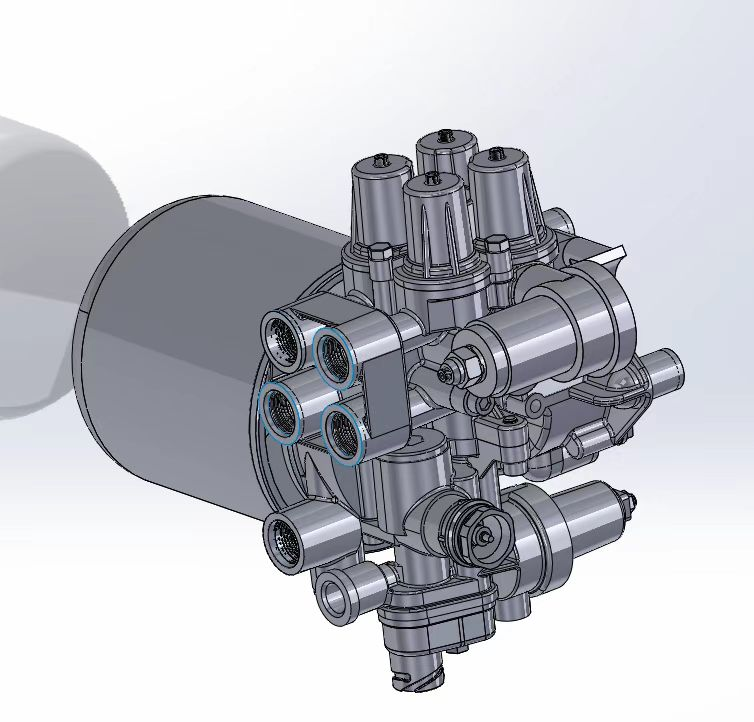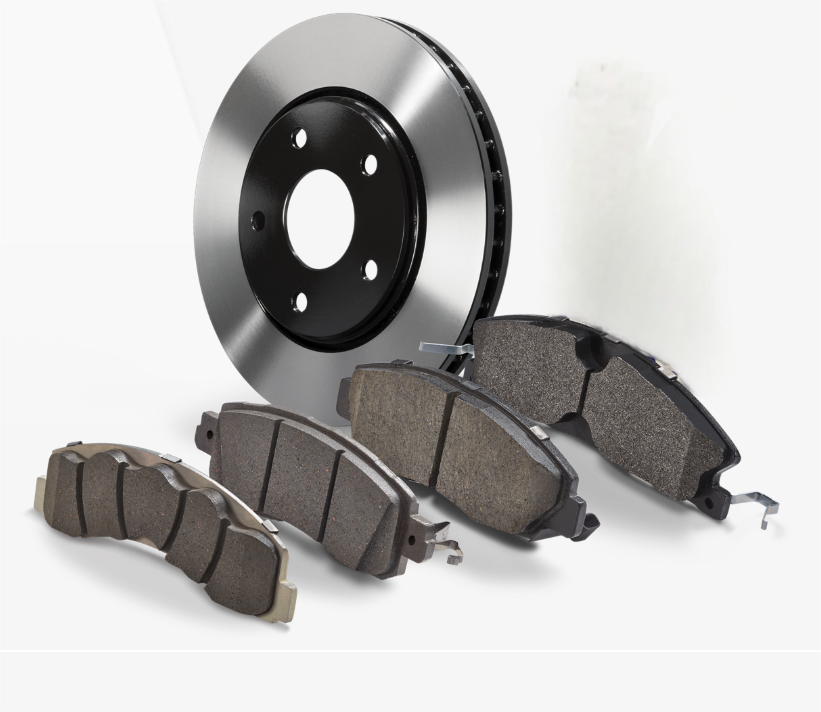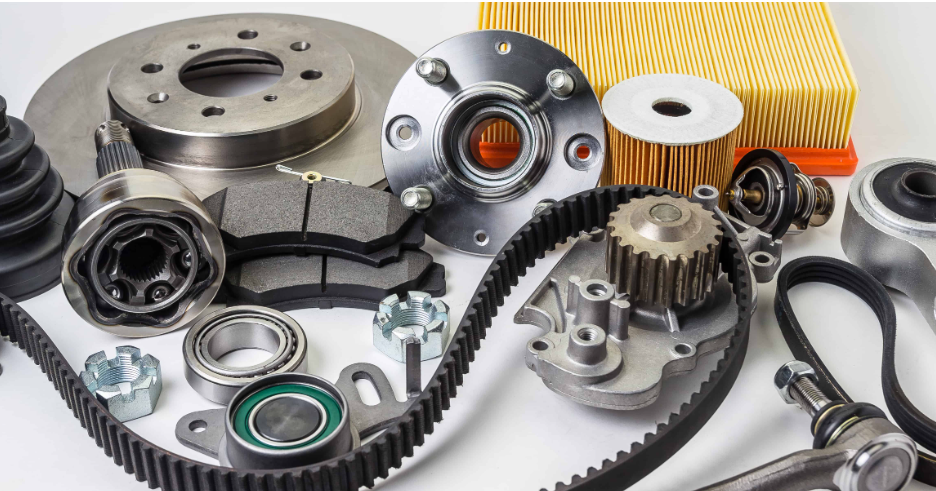Electric and Hybrid Truck Components Revolution
Battery Technology Advancements
Battery tech keeps getting better, and this matters a lot for where electric and hybrid trucks are headed. We've seen big changes thanks to things like lithium-ion packs and newer solid-state options that pack more power while lasting longer between replacements. Companies across the board are pushing this forward. Tesla and Rivian have made waves in the space, but even old school manufacturers such as Volvo are catching up fast. These firms aren't just tacking on batteries here and there they actually design their trucks around the latest storage solutions, which means we're seeing real improvements in how these vehicles perform day after day. Looking at numbers from IEA shows electric truck sales climbing steadily. Governments worldwide are offering tax breaks and other perks that make going green financially attractive for businesses. As cities push harder for cleaner air and lower emissions, it's clear we'll need continuous breakthroughs in battery tech to keep pace with demand.
Lightweight Material Integration
Lightweight materials like carbon fiber and aluminum play a big role in making electric and hybrid trucks more fuel efficient while still keeping them strong enough for heavy duty work. Research shows that swapping out heavier components for these lighter alternatives cuts down on vehicle weight substantially, leading to better performance across the board and lower emissions from the factory floor. Manufacturers have been finding smarter ways to work these materials into their production lines lately. New methods in aluminum die casting and special adhesives for bonding carbon fiber parts together are helping automakers get serious about building greener trucks without sacrificing quality or durability. These improvements aren't just good for the environment either they also translate into real cost savings over time for fleet operators who need reliable transportation solutions.
Charging Infrastructure Compatibility
Building out charging infrastructure remains essential for the expansion of electric and hybrid trucks across the transportation sector. Charging options keep evolving all the time, from those rapid charge stations we see popping up everywhere to experimental wireless charging tech still in testing phases. Industry analysts have been warning for years now that our current charging network simply won't cut it as more fleets switch to electric power. That's why we're seeing truck makers teaming up with local power companies lately. These partnerships aren't just about installing more chargers though they do want better coverage. The real goal is making sure whatever charging system gets deployed actually works well with how these electric trucks operate day to day without causing operational headaches for fleet managers.
Autonomous Truck Technologies
AI-Driven Navigation Systems
The trucking world has seen major changes thanks to AI-powered navigation systems that make route planning much smarter. These systems cut down on driving time and save fuel money when moving goods around. Big names in the field such as Waymo and Aurora have rolled out AI tech across their truck fleets, and the results speak for themselves in terms of getting things delivered faster and cheaper. Take a look at how these smart systems work their magic: they constantly check live traffic updates and weather forecasts to find roads that aren't backed up, which obviously saves cash for carriers. With competition heating up in the logistics sector, having AI navigation gives companies a real edge over rivals who still rely on old school methods. When businesses install AI into their navigation gear, they gain control over complicated supply chain issues, can schedule deliveries more accurately, and slash those ongoing expenses. This translates into smoother operations overall while also helping reduce environmental impact from excessive idling and inefficient routing.
Sensor Fusion for Collision Avoidance
Sensor fusion stands out as one of those key technologies making truck safety better through advanced collision avoidance systems. By combining information from radar sensors, LIDAR units, and camera feeds, we get a much more complete picture for safety purposes that actually cuts down on accidents happening on roads today. Companies like Mobileye and Nvidia are really pushing forward with these kinds of solutions right now, bringing us systems that take truck safety to whole new levels. Looking at actual crash data tells us something important too these systems work. Accident numbers have dropped where they're implemented, and drivers report feeling safer behind the wheel. When we put together all these different sensor inputs with smart algorithms running in the background, trucks become much better at spotting things coming their way before it's too late. And let's not forget how tech companies keep working together to improve things constantly. We should expect even better results down the road as this technology continues evolving.
Cloud-Based Platooning Solutions
Cloud platooning tech is changing how trucks operate together on highways. These systems let trucks share information instantly between each other so they can move as one unit instead of separately. Big names in the industry such as Daimler and Volvo have tested this technology successfully already. Their tests showed real improvements in fuel savings and lower emissions levels. When trucks stay at just the right distance apart and keep similar speeds, they save money on gas while being better for the environment too. The whole point of this coordination is twofold really fuel costs go down and pollution goes down with them. What we see happening now is companies connecting their fleets through the cloud, creating something like a convoy system that works automatically. We might be looking at a time soon when most long haul freight moves this way, giving both business owners and planet earth some relief from traditional shipping methods.
Advanced Brake System Innovations
High-Performance Brake Pads for Heavy Loads
Safety and performance in big rigs depend heavily on quality brake pads. Modern options use tough stuff like ceramics or metal mixes that last longer and stop better. Take a look at what happens when manufacturers tweak those materials - braking distance gets cut down noticeably, particularly when trucks carry full loads. Some tests show stopping distances can drop around 30% with better tech. Companies such as Brembo and Bosch have been working hard on this front lately. Their research keeps pushing forward how we think about brakes for commercial vehicles, making roads safer for everyone involved.
Smart Brake Wear Detection Systems
Vehicle maintenance just got smarter thanks to brake wear detection systems that monitor things in real time using sensors built right into the brakes themselves. These little devices keep tabs on how worn down those brake pads actually are and send warnings out when it's time for a replacement, so mechanics can get ahead of potential problems instead of waiting until something breaks down completely. Some actual tests done in the field show that trucks equipped with this kind of smart braking tech tend to spend about 25 percent less on repairs over time, plus drivers get warned way earlier about serious wear issues that could lead to accidents. With all the advances we've seen lately in internet connected devices and better ways to analyze data, what was once just a neat idea is now becoming standard equipment across many commercial trucking operations because it really does save money and improve road safety at the same time.
Cost-Effective Brake Shoe Replacement Solutions
New approaches to replacing brake shoes, including advanced materials and modular designs, are changing things up across the industry and helping shops save money. Old school brake shoes tend to cost a lot because they're made from pricey components and require complex installation procedures. The newer stuff? Well, manufacturers have come up with cheaper alternatives that still last pretty long and actually make installation easier for technicians, which means big savings over time. Take Meritor for instance—they've developed these modular brake systems where parts can be swapped out individually rather than replacing everything at once. Their system design cuts replacement costs by around 30% according to recent field tests. What we're seeing now is real change in the marketplace as fleet operators get access to good quality brakes at lower prices than ever before without having to sacrifice safety or performance standards.
Telematics and Predictive Maintenance
Real-Time Component Monitoring
Truck maintenance has changed completely since telematics systems came along, mainly because they let operators keep tabs on every part of the vehicle all day long. With this constant watch over the trucks, problems tend to show up on dashboards way before they actually break down, so mechanics get alerts early enough to fix things before major headaches happen. McKinsey did some research recently showing that companies cutting down on those surprise repairs saves them tons of money and keeps their fleets running smoother than ever. The big names in this space right now? Verizon Connect gives solid basic tracking while Fleetmatics focuses more on detailed analytics for bigger operations. Samsara stands out too with its easy-to-use interface that even non-techies can navigate. When fleet managers plug these systems into daily work routines, they not only avoid costly roadside breakdowns but also extend the life of expensive equipment across their entire garage.
AI-Powered Failure Prediction
AI is changing how we do predictive maintenance these days. By looking at old data plus what's happening right now, it can spot problems with machines long before they actually break down. When mechanics know ahead of time something might go wrong, trucks stay on the road longer and repair bills shrink quite a bit. Some studies have found around 12% less spending on fixes and almost 20% more uptime for entire fleets. Companies like Uptake Technologies and Predictive Safety are really pushing forward here. They've developed some pretty cool tools specifically for big rigs, helping haulers move away from guesswork toward making decisions based on actual numbers instead. The industry seems ready for this kind of smart maintenance strategy.
Fleet-Wide Data Analytics Integration
Analytics is becoming really important for getting the most out of fleet management and running operations better. When fleet managers bring analytics tools into all parts of their vehicle networks, they collect information that helps spot patterns and figure out where things could be improved. Some real world examples show that when fleets use analytics properly, they often see improvements in things like how much fuel gets burned and how well routes are planned, sometimes cutting costs by around 10%. More and more people in the industry are realizing that making decisions based on actual data matters a lot. Companies such as Geotab and Teletrac Navman are developing some pretty cool systems that help track all this information. Fleets that adopt these kinds of tech usually find themselves saving money and running smoother day after day.
3D Printing for Custom Truck Parts
On-Demand Replacement Part Production
The advent of 3D printing has changed how we make custom truck parts, allowing for fast manufacturing right when needed which cuts down downtime substantially. Imagine a situation where a particular truck part breaks down and no one carries it in stock anymore. Traditional suppliers just cant help fast enough. But with 3D printing, companies can print what they need right there, so trucks spend less time sitting idle in repair shops. Big names like UPS are already using this tech to handle those tricky repairs nobody else can fix quickly. What makes this even better? 3D printing actually helps the environment too. Less material gets wasted compared to old methods, and there's far less carbon emissions because parts don't have to travel thousands of miles from factories to repair locations. It's winning on multiple fronts really.
Durable Material Prototyping
Recent breakthroughs in material science have really taken 3D printing to new heights, making it possible to create tough prototypes that actually help improve how trucks get made. With all sorts of new materials coming onto the market, companies can now build test models that feel almost exactly like what will eventually roll off the assembly line. Some studies indicate that when manufacturers incorporate these sturdy 3D printed parts during initial design stages, they tend to catch problems earlier, fix them faster, and get products ready for customers months sooner than before. The engine departments and those working on truck frames across the industry are starting to see real value here too. Many shops report saving money on tooling costs while still getting high quality test pieces that stand up to rigorous testing conditions.
Reducing Supply Chain Delays
3D printing offers a real fix for those pesky supply chain delays because it lets companies produce stuff right where they need it. When parts get made locally instead of shipped across oceans, shipping times drop off a cliff and businesses aren't so dependent on these complicated worldwide networks anymore. Some studies show that firms adopting 3D printing tech for their supply issues actually cut down on late deliveries quite a bit and gained much better control over how things run day to day. Beyond just making logistics easier, this method helps companies keep track of what stock they have without tying up too much cash in warehouses. The bottom line? Lower expenses and happier customers who get what they want when they want it.







